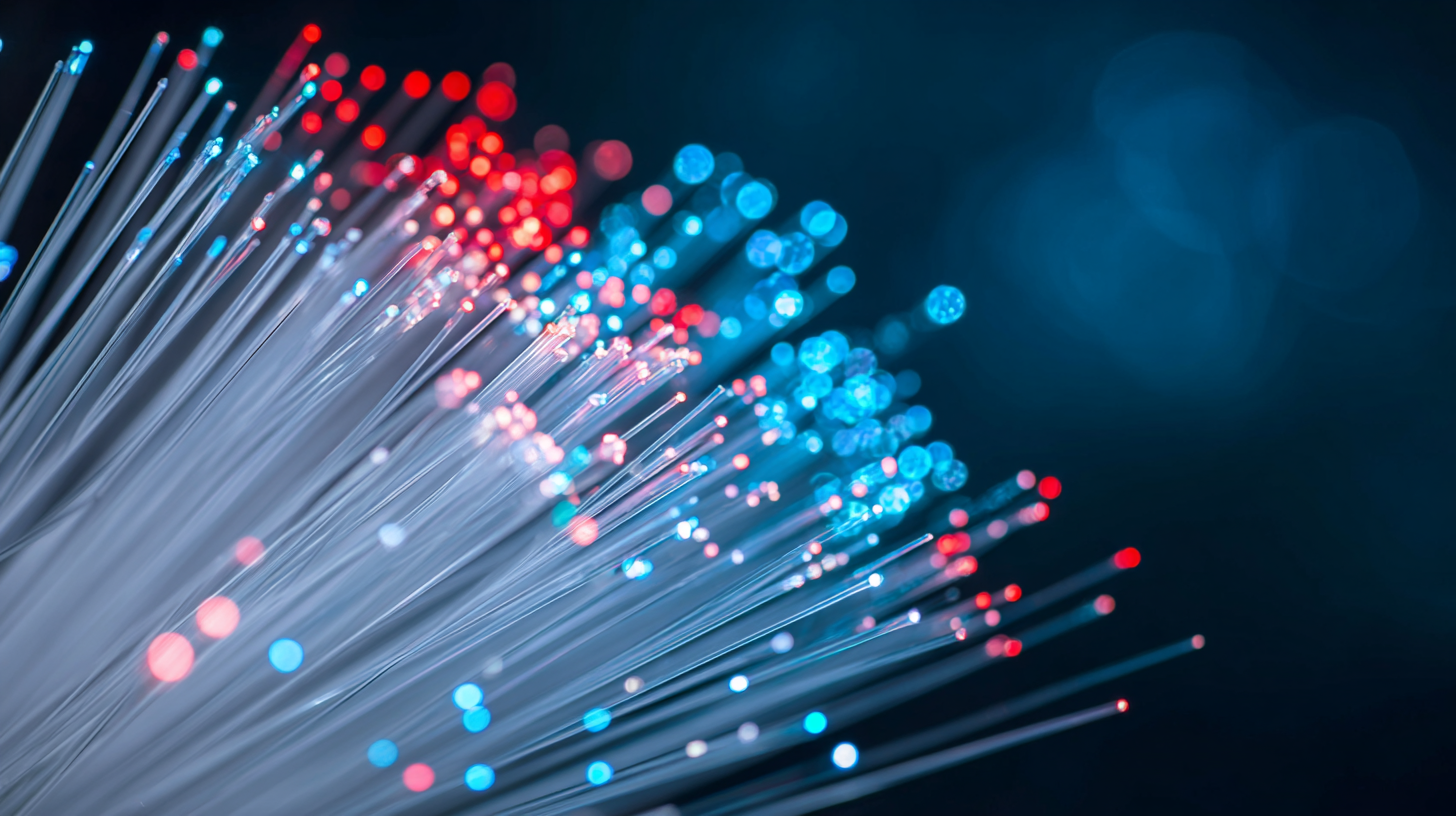Industries
Get direct access to our extensive portfolio of optical products and specialist technical expertise.
Get direct access to our extensive portfolio of optical products and specialist technical expertise.
 As we enter a new era of connectivity, the advancements in single mode fiber cable technology are poised to redefine networking solutions for the future. With a focus on "Made in China, Shared Globally, Quality You Can Trust," the innovations in this field promise not only enhanced data transmission speeds but also greater reliability and efficiency in communications infrastructure.
Single mode fiber cables, known for their long-distance and high-bandwidth capabilities, are at the forefront of these developments, enabling businesses and consumers alike to harness the power of superior connectivity.
This blog will explore how the latest innovations in single mode fiber cable will shape the networking landscape by 2025, driving transformative changes across various industries while maintaining a commitment to quality and global collaboration.
As we enter a new era of connectivity, the advancements in single mode fiber cable technology are poised to redefine networking solutions for the future. With a focus on "Made in China, Shared Globally, Quality You Can Trust," the innovations in this field promise not only enhanced data transmission speeds but also greater reliability and efficiency in communications infrastructure.
Single mode fiber cables, known for their long-distance and high-bandwidth capabilities, are at the forefront of these developments, enabling businesses and consumers alike to harness the power of superior connectivity.
This blog will explore how the latest innovations in single mode fiber cable will shape the networking landscape by 2025, driving transformative changes across various industries while maintaining a commitment to quality and global collaboration.
The rise of single mode fiber cable innovations is transforming the landscape of global networking solutions. As businesses and enterprises demand higher bandwidth and faster data transmission rates, single mode fiber optics have emerged as the preferred choice. Their ability to transmit signals over long distances with minimal loss ensures that organizations can maintain seamless communication and connectivity in an increasingly digital world. This shift is particularly crucial for sectors such as telecommunications, data centers, and cloud services, where robust and reliable network infrastructure is paramount.
Recent advancements in single mode fiber technology, including enhancements in materials and manufacturing processes, are setting the stage for a future where networking capabilities are more efficient and cost-effective. Innovations such as low-water peak fibers and improved splice techniques allow for greater flexibility and performance, catering to the needs of modern data traffic. As we move toward 2025, the continued development in this domain is not only expected to optimize existing networks but will also pave the way for novel applications in IoT, smart cities, and beyond, making single mode fiber a cornerstone of future connectivity solutions.
In the rapidly evolving world of networking, high-quality single mode fiber cables stand at the forefront of technological innovation. Chinese manufacturers are making significant strides in this space, primarily focusing on features that enhance performance and reliability. These cables are designed with precision, ensuring minimal signal loss over long distances, which is particularly critical for enterprises needing robust communication capabilities.
One of the key features of these advanced single mode fiber cables is their optimized core design, which allows for better transmission efficiency, especially in dense urban environments where interference can be a concern. Additionally, the materials used are engineered to withstand harsh conditions, offering durability that is essential for both indoor and outdoor installations. The integration of advanced manufacturing techniques also ensures that these cables meet international standards, providing businesses with the confidence they need to invest in their networking infrastructure. As we move closer to 2025, such innovations will not only redefine connectivity but also pave the way for smarter, more efficient networking solutions across various industries.
The evolution of single mode fiber (SMF) technology is set to profoundly impact the future of networking solutions. As enterprises increasingly demand higher bandwidth and faster data transmission capabilities, SMF offers a solution that minimizes signal loss over long distances. The precision with which light travels in a single mode fiber enables the infrastructure to support data rates that are essential for applications such as cloud computing, 5G networks, and the Internet of Things (IoT). With advancements in manufacturing processes, new innovations in SMF cables are emerging, promising even greater efficiency and improved performance.

Furthermore, the environmental benefits of adopting single mode fiber cannot be overlooked. SMF cables require fewer materials and consume less power than traditional multimode fibers, making them a more sustainable choice for businesses looking to reduce their carbon footprint. As organizations move towards green technologies, the adoption of SMF technology reflects a commitment to sustainability while still meeting the high-performance needs of modern networking. The future of networking solutions is likely to be shaped significantly by these innovations, paving the way for a more connected and efficient digital ecosystem.
The future of networking solutions will be profoundly influenced by innovations in single mode fiber cables, particularly in terms of sustainability and efficiency. As organizations increasingly recognize the importance of maintaining an eco-friendly infrastructure, the shift toward advanced fiber optic technologies is becoming evident. According to a report by Research and Markets, the global fiber optic cable market is projected to reach $18.9 billion by 2025, driven by the need for high-speed internet and sustainable communication options. This growth is largely attributed to the rising demand for energy-efficient solutions that traditional copper cables cannot match.
Cutting-edge fiber cables offer significant advantages in energy consumption and environmental impact. Data from the 2022 Fiber Optic Association indicates that single mode fiber can transmit data over longer distances with less power compared to multimode or copper alternatives, reducing overall carbon footprint. Furthermore, innovations such as bend-insensitive fibers and enhanced insulation materials contribute to lower waste and increased life cycles for these cables. As businesses pivot towards greener technologies, embracing these advancements will not only improve network performance but also align with global sustainability goals, creating a seamless integration of efficiency and eco-friendliness in future networking architectures.

As we move closer to 2025, the landscape of networking infrastructure is undergoing significant transformations driven by innovative single mode fiber cable technologies. According to a recent report by Market Research Future, the single mode fiber optic market is projected to exhibit a compound annual growth rate (CAGR) of over 10% between now and 2025. This growth is largely fueled by increasing demand for high-speed internet connections and the proliferation of cloud-based services that require a robust and reliable network backbone.
One of the emerging trends shaping this market is the shift towards sustainable and environmentally friendly materials in fiber cable production. Industry leaders are investing in R&D to develop cables that not only enhance performance but also reduce environmental impact. A report by Grand View Research highlights that technologies such as bend-insensitive fibers are gaining traction, promising better durability and efficiency for businesses looking to upgrade their infrastructure.
Tip: When evaluating networking solutions for your organization, consider focusing on technologies that integrate seamlessly with existing systems while also offering scalability to accommodate future growth. Look for providers that prioritize sustainability in their offerings, as this can contribute to a more resilient and eco-friendly network strategy. As single mode fiber connections continue to evolve, staying informed about these innovations will play a crucial role in meeting the demands of tomorrow's digital landscape.